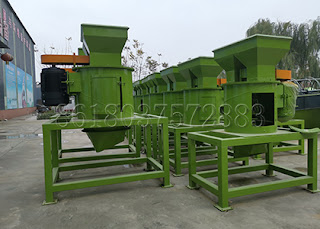How to Choose the Equipment in the Early Stage of Organic Fertilizer Fermentation?
With the increasing attention to environmental protection agriculture and the gradual recognition of organic fertilizer, the production and market of organic fertilizer have entered a period of rapid development. However, most companies that produce organic fertilizers are not traditional compound fertilizer manufacturers, but companies that have organic resources and did not engage in fertilizer production, such as sugar factories, sewage treatment plants, breeding farms, waste treatment plants, and food processing plants. , Slaughterhouses, etc., or new production plants attached to these enterprises. The production process of organic fertilizer and inorganic compound fertilizer is completely different. The selection of organic fertilizer production equipment will directly affect the production cost and product quality of organic fertilizer, as well as the size of the production site and the surrounding environment. The existing organic fertilizer production enterprises are mostly miniaturized, and the level of mechanization is not high. However, in some large-scale organic fertilizer production enterprises, it is difficult to find suitable machinery and equipment with a large amount of raw material processing. The main reason is that the raw materials for the production of organic fertilizers are diverse, and their properties are very different, and they all have the characteristics of high humidity. The moisture content of the raw materials before fermentation generally reaches 60% to 70%. However, after fermentation and drying, the material has a lighter specific gravity, a lot of impurities, and a lot of fibers, and subsequent processing is difficult. At present, organic fertilizer production enterprises generally use feed production equipment or general compound fertilizer production equipment, which is not highly targeted, so that production is not smooth. Whether the raw materials are handled well or badly in the early stage will directly affect the subsequent production.
The raw materials for organic fertilizer production are diverse and have different properties. Therefore, the pre-treatment should be different depending on the raw materials, and different processes and equipment should be selected for different materials.
1. Crushing equipment
There are various types of crushers for different materials to be crushed. Generally, the materials to be crushed have low moisture content, but most of the organic raw materials are materials with high moisture content and easy to agglomerate, such as various waste residues, part of poultry manure, and various agglomerated sludges. Wait.
The particle size of the materials during fermentation cannot be too fine, so these materials can only be processed by a disperser. Based on the above reasons, the crusher is required to have the characteristics of low relative speed, no screen, anti-sticking, and easy cleaning. For dry long-fiber materials, such as straws, etc., a commonly used straw pulverizer can be used for crushing. When pulverizing, the sieve hole can be adjusted to be large, and it is not necessary to pulverize too finely to meet the requirements of fermentation particle size. You can also use a general grass cutter to cut it into about inch-long pieces for fermentation. For wastes after food processing, such as rice husks, corn cobs, cakes and other materials, because of their low moisture content, general hammer mills can be used to achieve satisfactory results. For fresh wood, such as branches, flowers and plants after garden pruning, a branch shredder is required. For dry wood, a wood shredder can be used. When an organic fertilizer production plant is established, there are generally sources of its main raw materials. We have to choose different grinders according to the properties of these main raw materials. There may be one type or two types, or even multiple types of shredders to meet the requirements. Sometimes it is necessary to add crushing equipment according to the changes in the source of raw materials.
2. Mixing equipment
It is often necessary to mix various materials evenly during fermentation. Since organic raw materials have high moisture and cohesiveness, many auxiliary materials are relatively dry and light, and the moisture content and density of various materials are very different. Therefore, it is advisable to use a double-shaft non-gravity mixer. This kind of mixer has high mixing efficiency, does not require high moisture content, specific gravity, and particle size of the material, and belongs to forced mixing. For dry powder materials such as dried bacteria, a horizontal ring belt mixer can be used, which has high efficiency and low price. For materials with similar material densities or granular materials in slurry form, a gravity mixer can be used, which has the advantage of large capacity. Manufacturers should select grinders and mixers in a targeted manner according to their actual raw material conditions and process requirements. Of course, the stirring method is to stir during the dumping. The advantage of this is to reduce the processing links before fermentation and save the process and cost.



Comments
Post a Comment